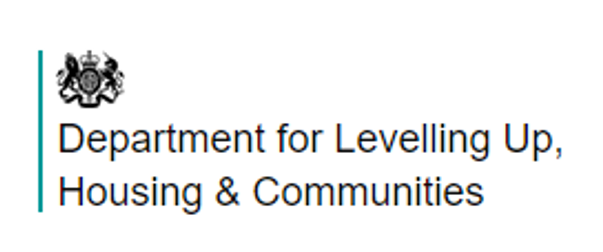
Why have these new unit cost measures been introduced?
The need for more robust cost measures has been raised by SPBM members at at least three clubs. This is because members want to get a firmer grip on their cost base to facilitate decision-making and respond to regulatory and political pressure to demonstrate VFM.
The HCA will never endorse any specific benchmarking service and believes it is for providers to determine an appropriate approach to understanding costs themselves. Given that the regulator:
- wants all organisations to understand and be transparent about the costs of services and
- takes a proportionate approach to the regulation of smaller housing associations,
We believe our solution to be pitched at the right level for those organisations that feel a full HouseMark exercise is not appropriate for them but they nevertheless want more robust cost measures.
What are the measures?
- Housing management
- Responsive repairs and void works
- Major works and cyclical maintenance
- Overheads (back office costs)
They seek to capture all costs associated with the common core business of a social housing landlord. Costs associated with support, care and housing plus-type services are not included in the measures to keep the playing field level. For example, support at one provider may look very different at another, depending on client group and service offer, but what they have in common is housing management, asset management and overhead costs. The treatment of these excluded costs is explained in the guidance referred to below.
Where do I find them?
The measures have been loaded onto your data entry screen along with their definitions. However, before you consider any of the measures in isolation, you need to see how they sit within an overall framework for understanding costs because they come as a suite. This guidance, therefore, is essential reading: Click here to read the full guidance (PDF) >>
You might even find the cost architecture a helpful way of thinking about your own cost structure.
How frequently is the data collected?
Annually, at year end!
What’s wrong with the existing cost measures?
The existing unit cost measures, derived from the statutory accounts, have limitations in terms of comparing with others, although providing you are consistent, they are useful for understanding your organisation’s trend.
The reason they are not so good for comparing with peers is because different organisations account for costs in different ways. Whilst such diverse cost allocation practice is perfectly acceptable for your financial statements, providing you adhere to accounting standards, they simply don’t lend themselves to robust comparisons.
The solution, therefore, is to a have a methodology for allocating costs in a consistent way – this is the basis of cost benchmarking. All participants must adhere to the same method regardless of their own accounting practices. If participants aren’t prepared to go to this extra effort, they shouldn’t undertake the exercise as it will compromise the quality of the data they submit. More on data quality below.
The definitions are comprehensive and should minimise the risk of misunderstanding and diverse interpretation of cost allocation. If in doubt about ‘where costs go’, contact the HouseMark benchmarking helpline (for more, see I need help understanding a definition or where I allocate a specific cost)
How do I know they are any good?
These unit cost measures have been designed by HouseMark experts and derived from their ‘industry standard’ cost benchmarking methodology, which has been fine-tuned over two decades.
Do I have to do them? What about the existing cost indicators that we get from our statutory accounts?
No, you don’t have to do them, it’s your choice. You will simply opt in because you see the value of them. The existing statutory accounts measures will remain on the system for everybody that wants them.
Won’t this involve more effort?
Yes! But not a huge effort – we have deliberately tried to come up with a proportionate solution – and you will end up with more credible/robust cost measures. As one of our members has said, ‘they’re a decent compromise between the granularity of HouseMark data and collectability.’
It is important, however, if you decide to participate, that you commit to adhere to the definitions to ensure data quality. More on data quality below.
Who can I compare to?
You can compare to any organisation that decides to collect the indicators regardless of club or region. You will also be able to compare against HouseMark data. We imagine that some members will be keen to collect this data immediately whilst others may not. So it’s a case of individual members opting in.
It’s really easy to run a report on the SPBM system, including hand-picking similar peers in a given region or nationally. Check out this video to see how easy it is: https://www.arap.co.uk/benchmarking/how-to-guides/
In time, we hope members will increasingly see the benefit of these new measures and clubs will adopt them as a standard feature of their reports.
I want more detail than these metrics offer
If you want to drill down further into these cost measures, you should consider joining HouseMark or undertaking a bespoke consultant-led benchmarking exercise (depending on the nature of the drill-down).
What about data quality?
Organisations wishing to benchmark these high level cost per property measures need to ensure they are closely following the definitions. The basis of SPBM is that it is a proportionate benchmarking solution for smaller housing associations – proportionate in terms of its cost and effort for the member. Done right, we believe that these definitions will require a reassuring, but not prohibitive, level of effort on the part of members. At this stage, introducing additional data validation (beyond the built-in ranges on the data entry screen) is not being considered as this would increase the cost for members.
To help ensure data quality, the definitions are comprehensive and HouseMark is available to respond to any queries on definitions and allocating costs (for more see I need help understanding a definition or where I allocate a specific cost). When Acuity produces the annual club reports, it also sense checks all results for anomalies. Clearly, this is not as rigorous as HouseMark validation which may take a day or so of a consultant’s time, but neither are the measures quite as granular as HouseMark’s.
Another way to ensure data quality is to trial the approach with ‘buddies’ in your benchmarking club. Your combined brain power will help you navigate the guidance and definitions, but remember you will always have the HouseMark benchmarking helpline as back-up. We would positively encourage members working together in this way. Indeed members in the North West are already thinking along these lines.
Responsibility for ensuring data accuracy of these measures falls to the housing provider. There is an implied duty of care on those participating in benchmarking exercises to endeavour ‘to get it right.‘ If participants aren’t prepared to go to this extra effort, they shouldn’t undertake the exercise and instead stick with the statutory accounts unit costs.
If participants require the assurance of detailed validation of their data, assistance with collating it (over and above clarity on definitions), or would like to benchmark their costs in more detail, HouseMark can provide this, but there will be an additional charge.
I need help understanding a definition or where I allocate a specific cost
The HouseMark benchmarking helpline is available to respond to any definition queries and clarification of where costs should be allocated: 024 7647 2707 or email data@housemark.co.uk






Comments are closed.